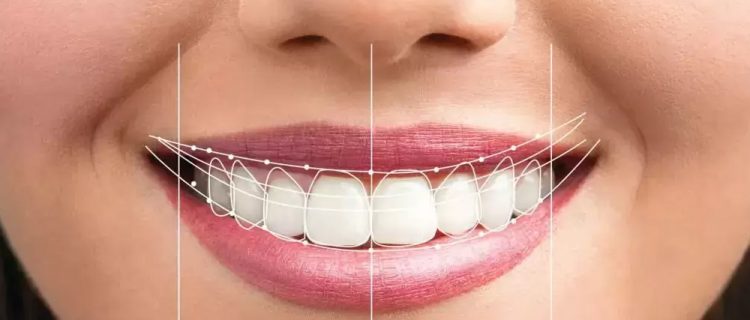Anasayfa » Cosmetic Dentistry Treatment

Cosmetic dental treatments involve a series of procedures aimed at enhancing smile design. Smile design is a treatment process that improves the aesthetics and appearance of the anterior incisors and small molars through applications such as laminate veneers, zirconium crowns, or e-max crowns. These treatments are designed for patients who are dissatisfied with elements such as the shape, color, size, and position of their teeth or who experience tooth loss.
Repair of broken, decayed, or chipped teeth (bonding): One of the procedures performed for aesthetic correction.
Dental implant: Placing an artificial tooth in the space of a lost tooth using implants in cases of tooth loss.
Teeth whitening (bleaching): The process of lightening the color of teeth.
Gum aesthetics (pink aesthetics): Procedures performed to enhance the aesthetic appearance of the gums.
Dental veneers (laminate veneers): Thin, specially designed porcelain coverings attached to the front surfaces.
Dental prosthesis: Prosthetic applications used in cases of tooth loss.
Orthodontics: Treatment methods used to correct irregularities in teeth.
Dental crowns: Tooth coverings made with materials such as zirconia crowns, all-ceramic crowns, or porcelain veneers.
In these aesthetic applications, materials such as zirconia crowns, all-ceramic crowns, and porcelain veneers are commonly used. These applications aim to meet patients’ expectations by prioritizing dental aesthetics.
Regarding whether these applications cause damage to the teeth, it has been noted that particularly porcelain veneer applications are the most protective coating approach to dental tissue. When proper procedures are followed during crown treatment, it is impossible to cause damage to the tooth.
The lifespan of these applications can extend over many years with proper oral care and regular check-ups. However, assigning a definite lifespan is not accurate, as this process can vary depending on the patient’s oral hygiene, dental care, and lifestyle. Regular check-ups are crucial for minimizing potential complications.
With the changing perception of beauty in today’s society, the healthcare sector has also adapted to this transformation. There is an increased demand for whiter, more evenly aligned, and impressive smiles. This phenomenon, known as the ‘selfie smile,’ has emerged as individuals aspire to achieve the captivating smiles they capture with filters in real life.
In such aesthetic applications, the following materials are commonly used:
Zirconia Crowns: Zirconia crowns, a durable and aesthetic option, are preferred to accentuate dental aesthetics.
All-Ceramic Crowns: All-ceramic crowns, providing aesthetics closest to natural teeth, are frequently used to meet aesthetic expectations.
Porcelain Veneers: Thin, specially designed porcelain coverings known as porcelain veneers are used to aesthetically enhance the front surfaces of teeth.
Metal-Based Porcelains are now considered an undesirable option in this classification.
These applications, in addition to addressing general dental health needs, have become one of the most popular areas in dentistry to meet patients’ aesthetic expectations. Cosmetic dentistry can help patients reshape, enhance, and whiten their smiles as they desire.
Especially, porcelain veneer applications are considered one of the most protective coating applications for dental tissue. These applications can typically be done without the need to touch the existing tooth. Porcelain veneers are considered an effective option for preserving the natural structure of the tooth since they consist of thin layers.
On the other hand, crown treatments involve comprehensive preparation of the tooth. However, when proper procedures are followed, it is nearly impossible for crown treatment to harm the tooth. The dentist will use appropriate preparation techniques to preserve the natural structure of the tooth before starting the treatment.
The lifespan of aesthetic dental applications can extend over long periods with proper oral care and regular check-ups. However, assigning a definite lifespan is not accurate, as this process can vary depending on the patient’s oral hygiene, dental care, and lifestyle. Regular check-ups are crucial for minimizing potential complications. Following your dentist’s recommendations for regular cleaning and care can enhance the durability of aesthetic dental applications and help ensure their long-term success.
You can reach us to get information about any dental treatment you desire.

With our innovative and dynamic team, we are at your service for all your dental treatment needs.